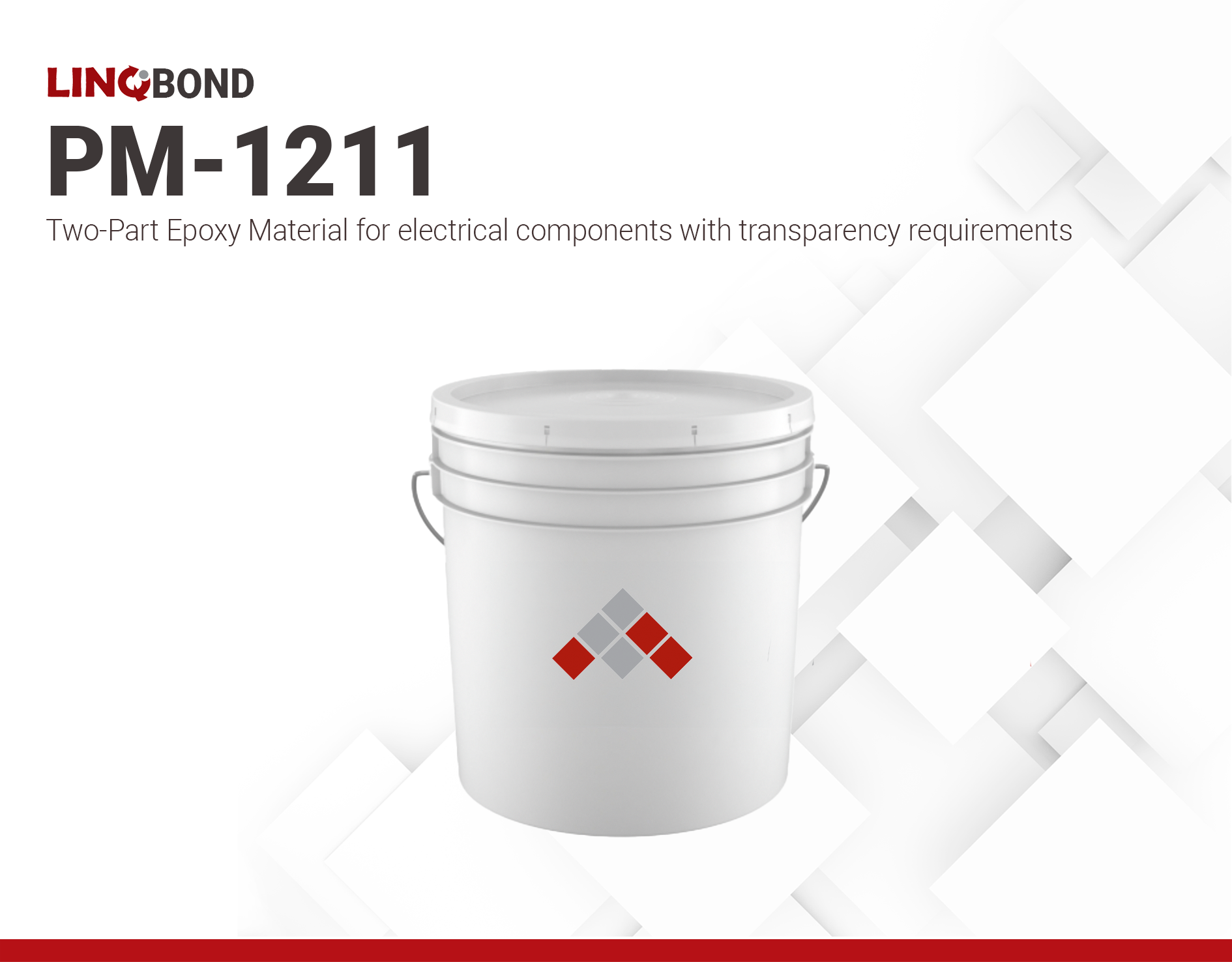LINQBOND PM-1211 | Two part silicone potting material
- Solvent free
- Excellent weather resistance
- UV resistance
Product Description
LINQBOND PM-1211 is a two-component silicone potting material engineered for room temperature curing, condensation and dealcoholization type of potting material. It offers self-leveling capability, high and low temperature resistance, exceptional ageing resistance, insulation, moisture and shock resistance.
LINQBOND PM-1211 is suitable for potting and sealing of electronic components with transparency requirements, LINQBOND PM-1211 seamlessly integrates into your projects, ensuring a smooth and reliable finish.
Technical Specifications
| General Properties | |||||
| Chemistry Type | Silicone | ||||
| Mix Ratio Mix Ratio The amount of a constituent divided by the total amount of all other constituents in a mixture | 10:1 | ||||
| Physical Properties | |||||
| Viscosity Viscosity Viscosity is a measurement of a fluid’s resistance to flow. Viscosity is commonly measured in centiPoise (cP). One cP is defined as the viscosity of water and all other viscosities are derived from this base. MPa is another common unit with a 1:1 conversion to cP. A product like honey would have a much higher viscosity -around 10,000 cPs- compared to water. As a result, honey would flow much slower out of a tipped glass than water would. The viscosity of a material can be decreased with an increase in temperature in order to better suit an application | 1000±500 mPa.s | ||||
| Electrical Properties | |||||
| Dielectric Strength Dielectric Strength Dielectric strength is measured in kV per mm and is calculated by the Breakdown voltage divided by the thickness of the tested material. Those two properties go hand in hand and while Breakdown voltage is always thickness dependent, dielectric strength is a general material property. As an example, the dielectric strength of Polyimide is 236 kV/mm. If we place 1mm of Polyimide between two electrodes, it will act as an insulator until the voltage between the electrodes reaches 236 kV. At this point it will start acting as a good conductor, causing sparks, potential punctures and current flow. | ≥18 kV/mm | ||||
| Volume Resistivity Volume Resistivity Volume resistivity, also called volume resistance, bulk resistance or bulk resistivity is a thickness dependent measurement of the resistivity of a material perpendicular to the plane of the surface. | 1.0x1014 Ohms⋅cm | ||||
| Mechanical Properties | |||||
| |||||
| |||||
| Thermal Properties | |||||
| Operating Temperature | -60-200 °C | ||||
| Thermal Conductivity Thermal Conductivity Thermal conductivity describes the ability of a material to conduct heat. It is required by power packages in order to dissipate heat and maintain stable electrical performance. Thermal conductivity units are [W/(m K)] in the SI system and [Btu/(hr ft °F)] in the Imperial system. | 0.3 W/m.K | ||||
Additional Information
Preliminary Instructions
Before using the potting material, make sure the potting surface is clean and free from oil and dust. Due to the higher proportion of component A, long-term storage can lead to stratification. Therefore, it’s essential to thoroughly mix it before use to maintain optimal product performance.
Processing Instructions
Mix component B to A according to specified ratio. Stir evenly while pouring the component and to ensure uniformity pay attention to scraping the wall until same color.
The product should be used within 1 hour from mixing.
Automatic mixer and filling machine can be used.
Precautions
For optimal results, ensure that component A is thoroughly mixed before use to prevent stratification during long-term storage. Additionally, apply the glue in a well-ventilated environment.
It is recommended to fully utilize the mixed component at one time. Any remaining glue and curing agent should be properly sealed and stored.
Generally, the potting thickness is less than 20mm. For deep potting, please contact us for technical support
Please note that the provided information is based on available data and typical conditions. For specific applications and detailed test results, refer to the actual test data and conduct appropriate certifications.
Storage and Handling
Store in a ventilated, dry, and clean environment 10-30 °C and 50% RH. At proper storage conditions, Part A and Part B has a shelf life of 6 months.



